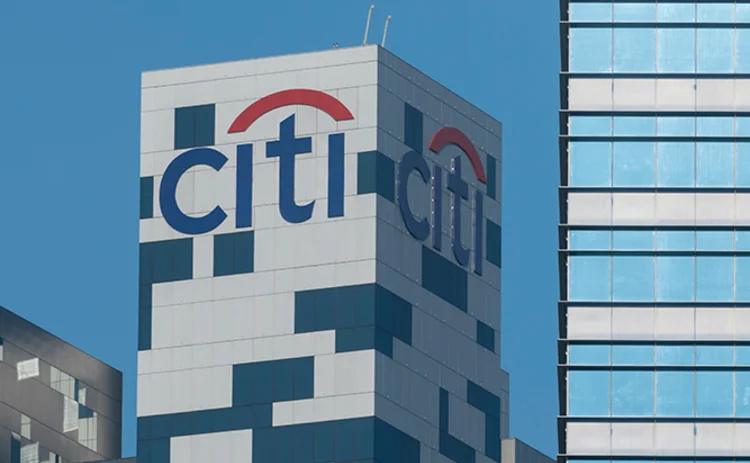
Derivatives house of the year, Asia: Citi
Energy Risk Asia Awards 2017: Citi’s breadth and depth of service drives cross-commodity growth

Citi’s Asian commodities arm boasts a range of expertise across derivatives – from energy to agricultural and soft commodities, emissions and metals. While the skill sets required to perform well in each of these sectors varies, it is the bank’s ability to warehouse large amounts of risk and trade in and out of it in an orderly fashion that holds the key to its appeal.
“Our ability to understand client objectives and structure and execute large transactions in metals and mining is probably our greatest differentiator in that space,” says Dhiraj Singh, head of metals sales for Asia at Citi. “That involves understanding the commercial objectives, the ability to design a credit and legal structure that is effective and practical to obtain the commercial objectives, and provide seamless execution.”
Clement Cheng, head of energy sales for Asia-Pacific at Citi, says the bank’s relationship with its clients goes beyond traditional client services. “When Citi wants to do something – for example, when we have a lending relationship onshore in a country such as Indonesia or China – we are all in,” he says. “We will have a lot of credit appetite; we will go very deep with the client.”
Over the past year, metals derivatives activity has been subdued globally, as producers have hedged less in a buoyant market. But Citi’s Asian derivatives business has performed well, a fact that Singh puts down to an understanding of the local market.
“There is a tendency in Asia for consumers is to build price-based hedging rather than programme-based hedging which is what you have seen from the industries in the west,” he says. “We continue to see decent penetration across Asia in our precious metals financing business across gold, platinum, palladium and silver, with a range of clients there from trading houses to jewellers to refineries through which we have managed to grow market share.”
In the oil and gas sector, producers have been locking in cashflows. The majority of business is in the form of plain vanilla swaps and options, but the firm has the capacity to meet far more tailored customer demands.
“Those clients who haven’t done much hedging, or perhaps wanted to design a large, episodic programme, would use more structured derivatives. For example, market redemptions or knock-in/knock-out options,” Cheng says. “We are a large commodities bank, and the ability to take on sizeable trading risk is equally important to the producer community. That ability sets us apart from regional competition.”
He points to the example of a client that was looking for protection on its margin exposure while still gaining some degree of upside potential should more favourable market conditions develop. In structuring the resulting product, Citi’s commodities trading and risk management teams collaborated closely to model the illiquid risk associated with the structure and to establish internal limits that would accommodate the client’s requirements.
The firm sees several possible events or scenarios in 2018 that could engender new hedging requirements. In precious metals, India’s new tax regime, tighter US monetary policy and strong interest in cryptocurrencies caused demand for gold to suffer in Q3. But Singh remains bullish that the firm can make gains in the market in the future.
“In terms of opportunities, we will continue to invest in the financing side of the business, which is where I feel growth will come from,” he says.
Cheng adds that as independent oil refineries try to export and open up in a number of jurisdictions across Asia, the bank expects an increase in refinery margin exposure for those refiners. At the same time, the ongoing expansion of Chinese firms overseas could continue.
“I wouldn’t be surprised if both the Chinese government enterprises and the private enterprise make large M&A deals in the next two to three years as asset valuations remain cheap and other larger international oil companies want to reduce leverage in their balance sheet. So in China, we should expect more episodic hedging from firms and also some hedging activities related to M&A,” he says.
Only users who have a paid subscription or are part of a corporate subscription are able to print or copy content.
To access these options, along with all other subscription benefits, please contact info@risk.net or view our subscription options here: http://subscriptions.risk.net/subscribe
You are currently unable to print this content. Please contact info@risk.net to find out more.
You are currently unable to copy this content. Please contact info@risk.net to find out more.
Copyright Infopro Digital Limited. All rights reserved.
You may share this content using our article tools. Printing this content is for the sole use of the Authorised User (named subscriber), as outlined in our terms and conditions - https://www.infopro-insight.com/terms-conditions/insight-subscriptions/
If you would like to purchase additional rights please email info@risk.net
Copyright Infopro Digital Limited. All rights reserved.
You may share this content using our article tools. Copying this content is for the sole use of the Authorised User (named subscriber), as outlined in our terms and conditions - https://www.infopro-insight.com/terms-conditions/insight-subscriptions/
If you would like to purchase additional rights please email info@risk.net
More on Awards
Joining the dots: banks leverage tech advancements for the future of regulatory reporting
The continued evolution of regulatory frameworks is creating mounting challenges for capital markets firms in achieving comprehensive and cost-effectiveawa compliance reporting. Regnology discusses how firms are starting to use a synthesis of emerging…
Markets Technology Awards 2024 winners' review
Vendors spy opportunity in demystifying and democratising – opening up markets and methods to new users
Derivatives house of the year: JP Morgan
Risk Awards 2024: Response to regional banking crisis went far beyond First Republic
Risk Awards 2024: The winners
JP Morgan wins derivatives house, lifetime award for El Karoui, Barclays wins rates
Best product for capital markets: Murex
Asia Risk Awards 2023
Technology vendor of the year: Murex
Asia Risk Awards 2023
Best structured products support system: Murex
Asia Risk Awards 2023
Energy Risk Asia Awards 2023: the winners
Winning firms demonstrate resiliency and robust risk management amid testing times







